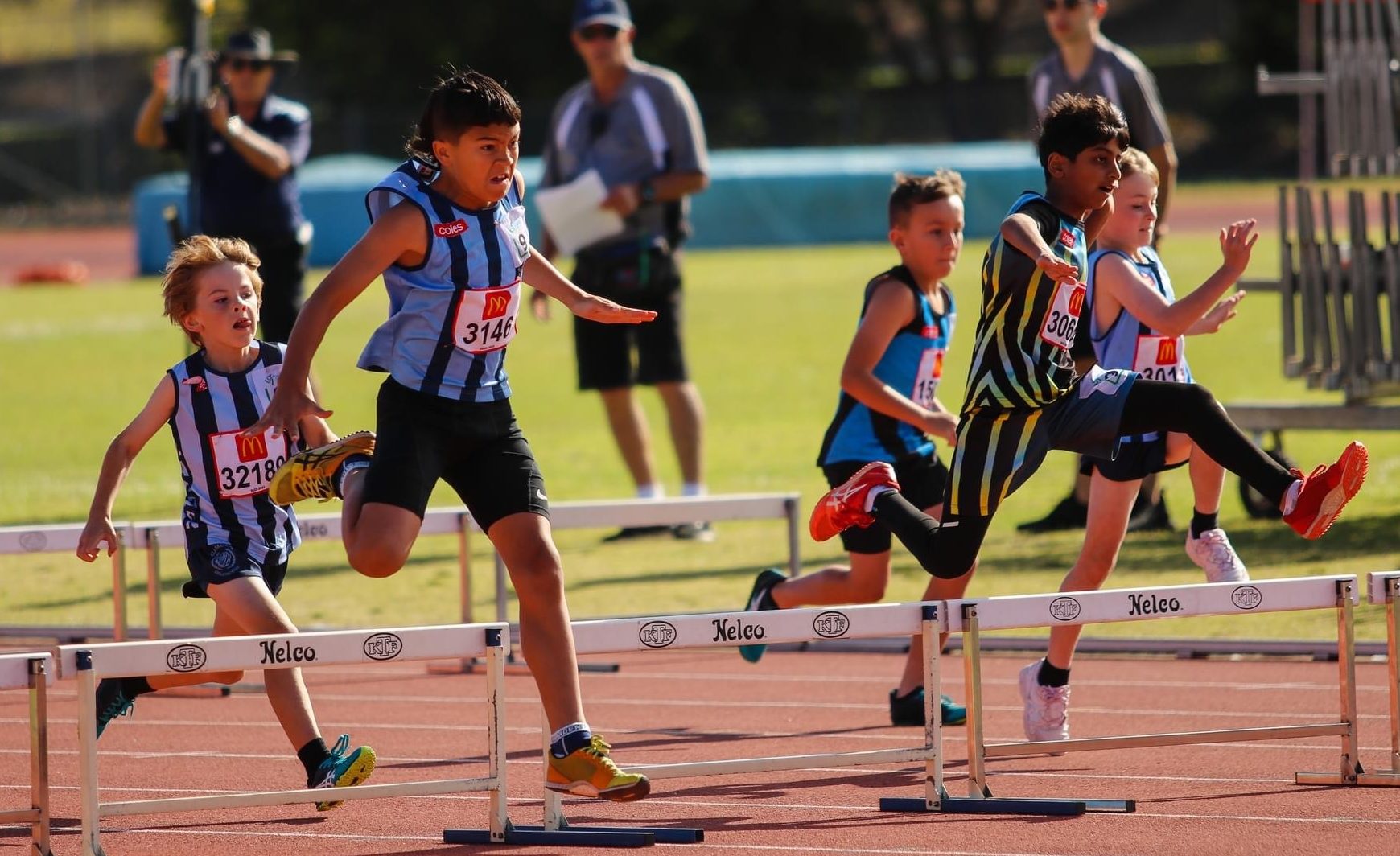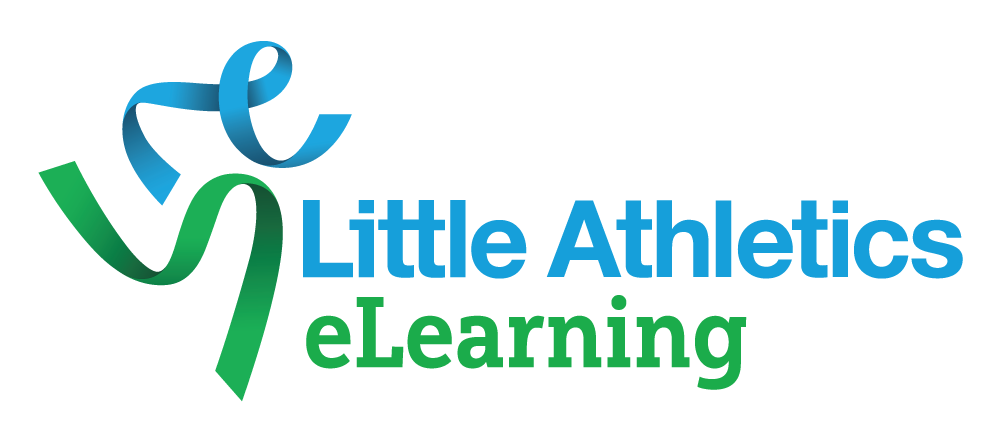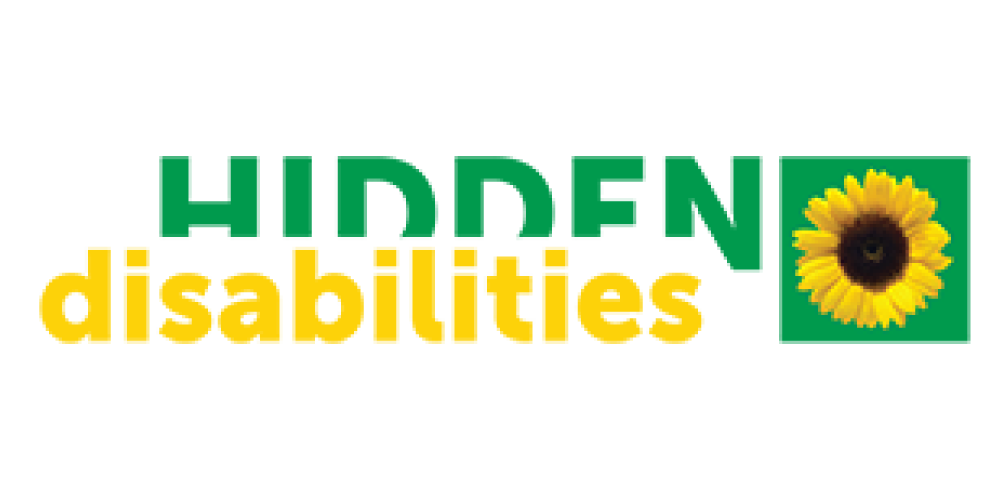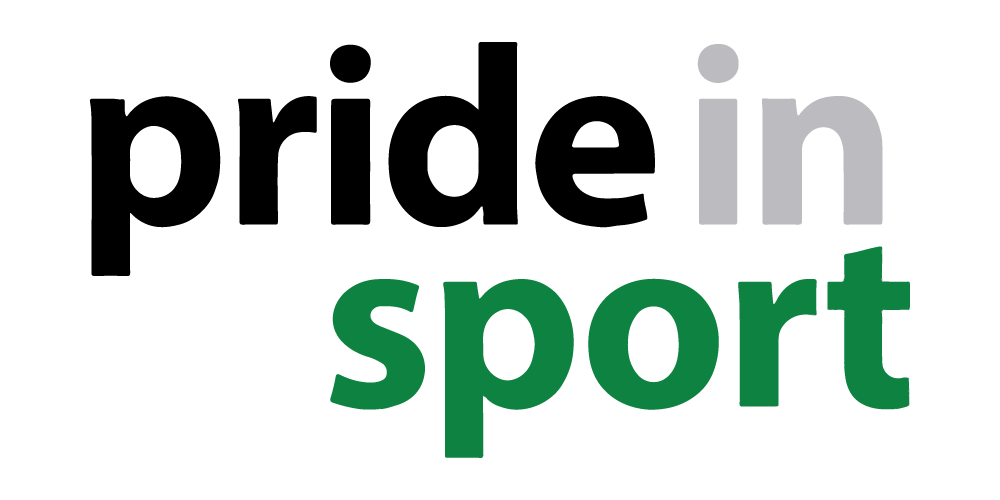Hurdles

Hurdles Skills
- Run in a forward motion toward the finish line.
- Begin hurdle movement close to the hurdle without hitting.
- Lead leg (the first leg over the hurdle).
- Bend at hips to lift leg forward.
- Leg straight over hurdle - parallel to the ground.
- Foot lands in a straight line to running.
- Follow leg (follows the lead leg).
- Take leg out sideways and lift leg to the side.
- Bend at knee and bring heel to bottom.
- Toes pulled up towards shin.
- Knee pulls through and lifts towards chest.
- Foot lands in a straight line to running.
- Lead leg (the first leg over the hurdle).
- Smooth, fast running between the hurdles.
- Any number of hurdles can be knocked down accidentally.
- Begin hurdle movement close to the hurdle without hitting.
- Wheel in a forward motion toward the finish line.
- Look up and straight ahead.
- Arm push begins with hands on rim at 1-2 o’clock, push through to 6-7 o’clock, release.
- Lift elbows high and forward to reconnect at 1-2 o’clock.
- Use smooth fast strokes.
- Lean slightly forward (requires safe wheelchair set up).
Race Technique
- Official or Age Manager will show athletes to their lanes and the starting line.
- When race starter says “On your Marks”.
- Move up to stand behind the line.
- Point feet point in direction of run.
- Listen or look for the next instruction.
- Race starter says “Set”.
- Front leg forward and bent (behind line).
- Back leg bent and weight on balls of foot.
- Listen or look for the next instruction.
- Race starter says “go”.
- Listen for the bang of the gun and run.
Or - Look for the visual sign of arm lowering or light flash and run.
- Listen for the bang of the gun and run.
- Race
- Run between the lines of your lane (for races up to and including 400m).
- Keep moving until you are past the end line.
Modification Options
- Reduce height of hurdles to match the athlete’s stepping height and balance.
- Reduce the number of hurdles.
- Reduce the distance of race.
- Athlete can run without hurdles.
- Use modified hurdles.
- Soft hurdles.
- Place items to step over such as pole or stick or baton.
- Draw a line on the track or place a ribbon or mat.
- Cones/marker beside lane.
- Allow different actions for the hurdle.
- Shalom – Athlete weaves around hurdles rather than go over them (need space around hurdles).
- When using modified hurdles can use a different action when reach the marker.
- Step or skip.
- Raise hands momentarily (from wheelchair or frame runner).
- Assistive Technology (equipment) is used to support balance so the athlete can compete.
- You can allow the athlete to use their everyday equipment. This is Assistive Technology that they use in their everyday life, not for a short-term injury.
- Crutches.
- Walking frame.
- Wheelchair.
- Orthotics.
- Prosthetics.
- Specialised Assistive Technology for athletics can be used.
- Frame Runner.
- Race Wheelchair.
- Gloves.
- Athletes may need a helper adult (for example parent or support worker or therapist) to use the equipment safely and effectively, especially when learning – ask the athlete what they need.
- You can allow the athlete to use their everyday equipment. This is Assistive Technology that they use in their everyday life, not for a short-term injury.
- Think about lane allocations.
- Athletes will likely need 2 lanes or a spare lane either side.
- Encourage the athlete to use the lane with the smoothest surface to reduce risk of injury due to reduced balance and body awareness.
- Sometimes the inside lane has a lip on the track which can be a tripping hazard.
- The outside lane has a gentler curve which is helpful if using equipment or the athlete needs help from an adult (for example parent or support worker or therapist).
- Starter gun.
- Visual signal required for athletes with sensitivity to noise. They may also choose to wear ear muffs or start on the opposite side to the gun.
- Visual or touch signal required for deaf and hard of hearing athletes.
- Hand or flag raised on “get set” and lowered on “go”.
- Athlete in lane 1 or 8 with the person signaling to stand to the same side.
- Gently tap the shoulder on “go”. Stand out of the way of their start.
- Audible signal required for athletes with vision impairment.
- For blind and low vision athletes, use a guide athlete. See the sensory page for more information.
- Use bright markers to show where to run.
Before you Start
- Hurdles are the correct height for the athlete’s age OR athletes’ ability.
- Hurdles face the correct direction.
- Hurdles are clear of each other – ie not touching the hurdle in the next lane.
- Hurdles are in the correct position on the track.
Safety
- Only jump a hurdle in the correct direction so it falls over if you hit it.
Measuring
Officials – Time person
- Pre-race.
- Position yourself to see the race starter.
- Your timing device is on 0:00.00
- Time a place rather than a lane or athlete.
- When race starter indicates “go”.
- Start timing when you see the smoke or light or arm lower.
- To end race.
- Stop the timing device when the torso of the athlete crosses the line.
- When is a runner disqualified?
- If the athlete runs in another lane (for races up to and including 400m).
- If an athlete interferes or impedes another athlete’s performance.
Officials – Race starter
- Pre-race.
- Check time people are ready.
- Stand so that you can see all athletes.
- When you say “On your Marks”.
- Hold your arm parallel to the ground.
- Call the next command when athletes are steady.
- When you say “Set”.
- Move your arm above your head.
- If the athlete is unsteady, or moves before go, start the whole process again. Allow an approximation for appropriate athletes.
- You say “go”.
- Fire the gun and/or flash light .
- Lower arm.
Recording
- Record the time to the nearest tenth (10th) of a second.





